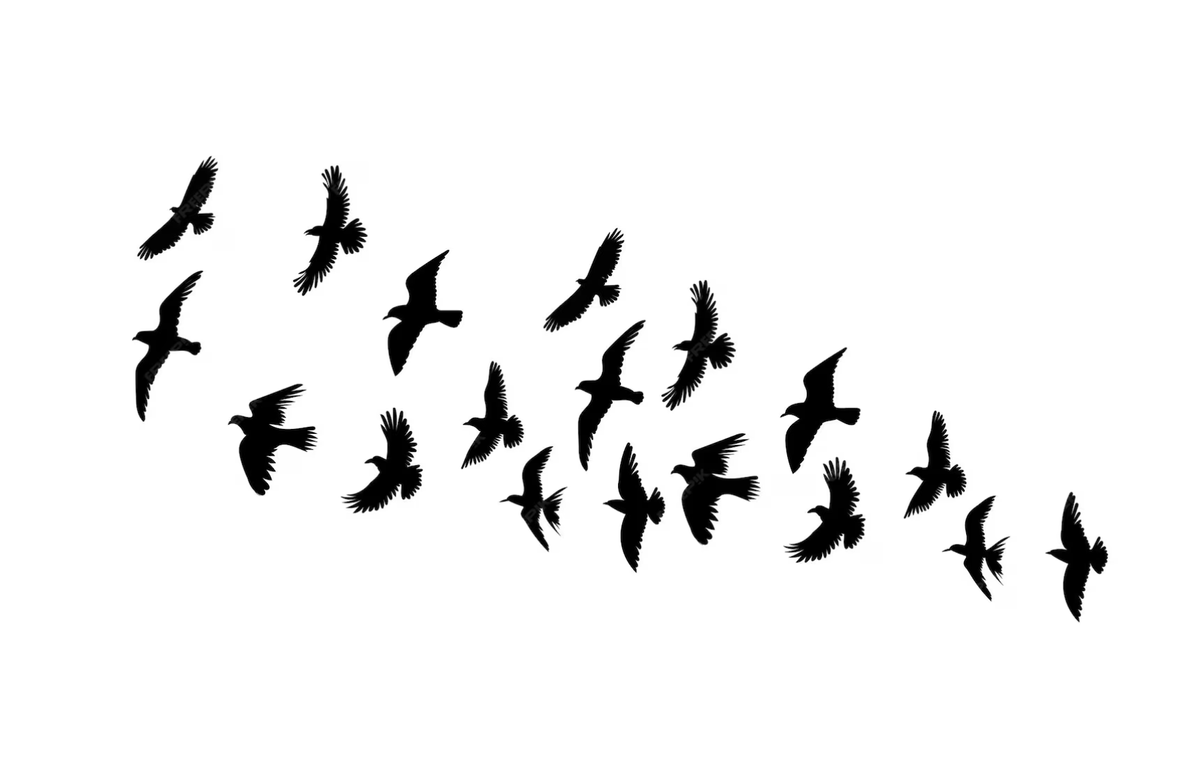What is going on with bird flu?

On Tuesday, H5N1, the influenza virus that causes bird flu, made headlines – fragments of the virus were detected in the commercial milk supply in the United States. Here’s a quick update on what’s going on and how we got here.
Bird flu is spreading in mammals, which is unusual
H5N1 bird flu is not new – it has been widespread in wild birds for decades. What is new is an especially bad outbreak in birds last year (why eggs were so expensive), then it jumped to mammals including dairy cows in the US and thousands of sealions that are dying in South America. Early this month a single case of transmission from cows to a human was reported in Texas.
Bird flu usually only infects birds – seeing it spread within mammal populations is unusual. We’ve known for several weeks that bird flu has been infecting livestock, particularly dairy cattle, in the United States. According to the CDC, bird flu has been found in 33 dairy cattle herds in 8 states. However, testing has been limited, and the news that remnants of the virus were found in the commercial milk supply suggests the outbreak is much larger than we realized.
Pasteurization helps keep our milk supply safe
Thankfully, it is very unlikely that anyone will catch bird flu from milk sold in grocery stores thanks to pasteurization, the process of heating milk to kill bacteria and viruses. Influenza viruses like H5N1 are fragile and sensitive to heat, so the pasteurization process should be very effective at deactivating any virus before it hits the grocery store shelves. The fragments that were found in milk were just that – fragments – which likely occurred due to the breakdown of the virus during pasteurization.
Additional testing is being done to be absolutely sure no infectious virus makes it through pasteurization, but to date we do not have reason to think milk is unsafe. I’m still drinking lattes.
Viral remnants in the milk supply suggest the outbreak is bigger than we realized
So if milk is safe, why did it make headlines? Milk from infected dairy cows was supposed to be removed from the commercial supply, so finding remnants of the virus in commercial milk suggests either 1. milk from sick cows was not being properly identified and discarded or 2. the virus is being spread and shed asymptomatically. Altogether, this suggests the outbreak in dairy cows is far bigger than just 8 states. For a deeper dive into some of the genetic analysis and wastewater data, check out this post.
Currently, the risk to humans is low, but H5N1 is something to watch
Thankfully, H5N1 is only circulating in animals and we currently do not have any evidence of human-to-human transmission. The recent human case in Texas was a dairy worker who likely caught it directly from dairy cows, not from another human, and symptoms were mild (conjunctivitis). There are unconfirmed reports of flu-like symptoms in other workers who did not want to be tested, so we don’t know exactly how many cases from cow exposure there are. Genetic analysis shows this strain does not have mutations that are known to be associated with transmission in humans, which is very good news.
However, the current outbreak in mammals is unusual. The more the virus spreads beyond birds and infects new hosts, the more chances it has to mutate and potentially jump to a human population. A jump to pigs, for example, would be particularly concerning, as they can serve as “mixing vessels” that may facilitate a jump from animals to humans. That’s why we’re watching the spread in dairy cows and other mammals closely.
Unfortunately, H5N1 would be a very big deal if it mutated and started spreading human-to-human. Over the last two decades, bird flu has occasionally infected humans who have close exposure to infected animals. It is rare but deadly, with over 50% mortality in known cases. Just like the early days of COVID, it’s possible that mortality is overestimated if milder cases go undetected, but we’d rather not find out.
What are health organizations doing to prepare
While we all hope this will fizzle out and become nothing, health organizations are preemptively taking steps to prepare. Based on studies of the human case in Texas, we know:
- This version of H5N1 is susceptible to antivirals like tamiflu, which is used to treat seasonal influenza
- We have a robust and adaptable system for making flu vaccines, and based on genetic analysis, the tools we already have in place within the US National Pre-Pandemic Vaccine Stockpile are predicted to be effective against this new strain.
- The US has a stockpile of H5 vaccines already made that they believe would be a good match, if needed.
It’s important to note that while both tamiflu and flu vaccines reduce the risk of death from seasonal influenza, they are not a silver bullet. For H5N1, while we predict these tools will help, we won’t know the exact effectiveness in humans unless an outbreak actually happens and we can study it. But it’s still very reassuring that we have them — it is far better than starting from scratch like we did for COVID.
What do you need to do?
The risk to humans is currently low – again, there is no evidence this is spreading in human populations. If you work with poultry or livestock, read specific recommendations here. Reasonable precautions everyone can take to help avoid a potential jump to humans include:
- Do not drink unpasteurized milk (this is never a good idea).
- Do not touch wild birds, just admire their beauty from afar.
- Do not touch sick or dead wildlife, cows, birds, or other animals – this thing is widespread in animal populations. If an animal looks sick, stay away.
Finally, this is not March 2020. Bird flu is something to watch, but it is not something to panic about. Stay away from dead animals and unpasteurized milk, and keep living your life. If the risk changes, we’ll let you know.




